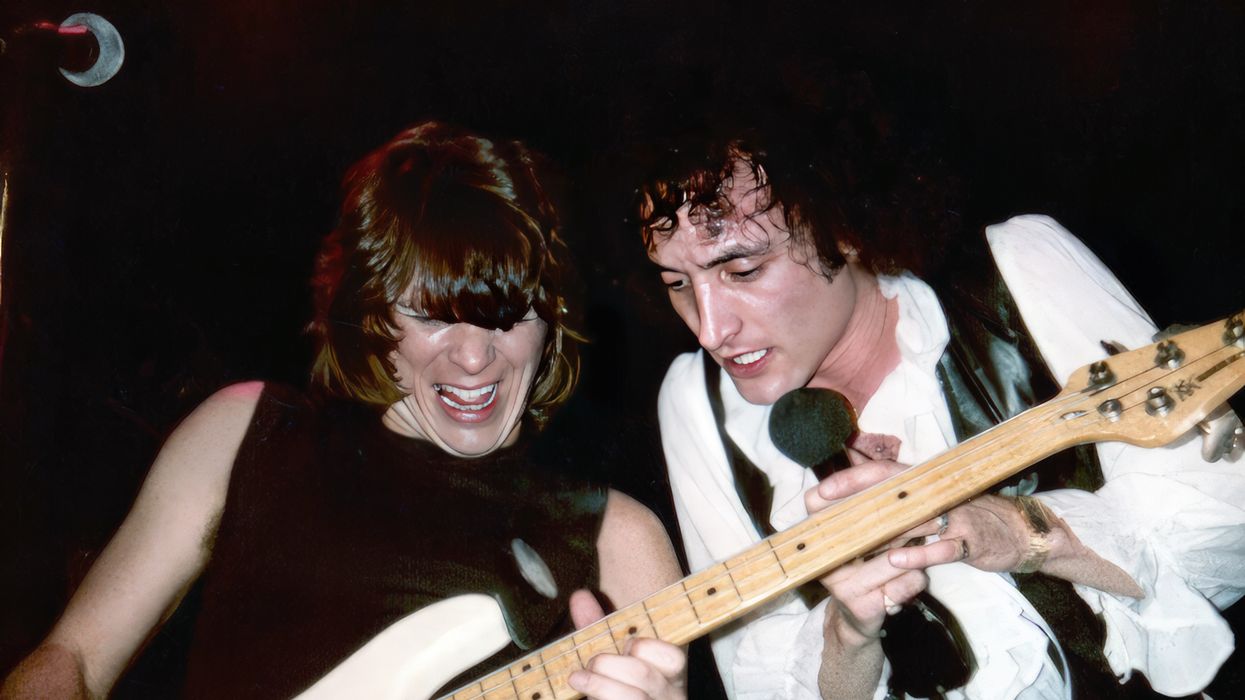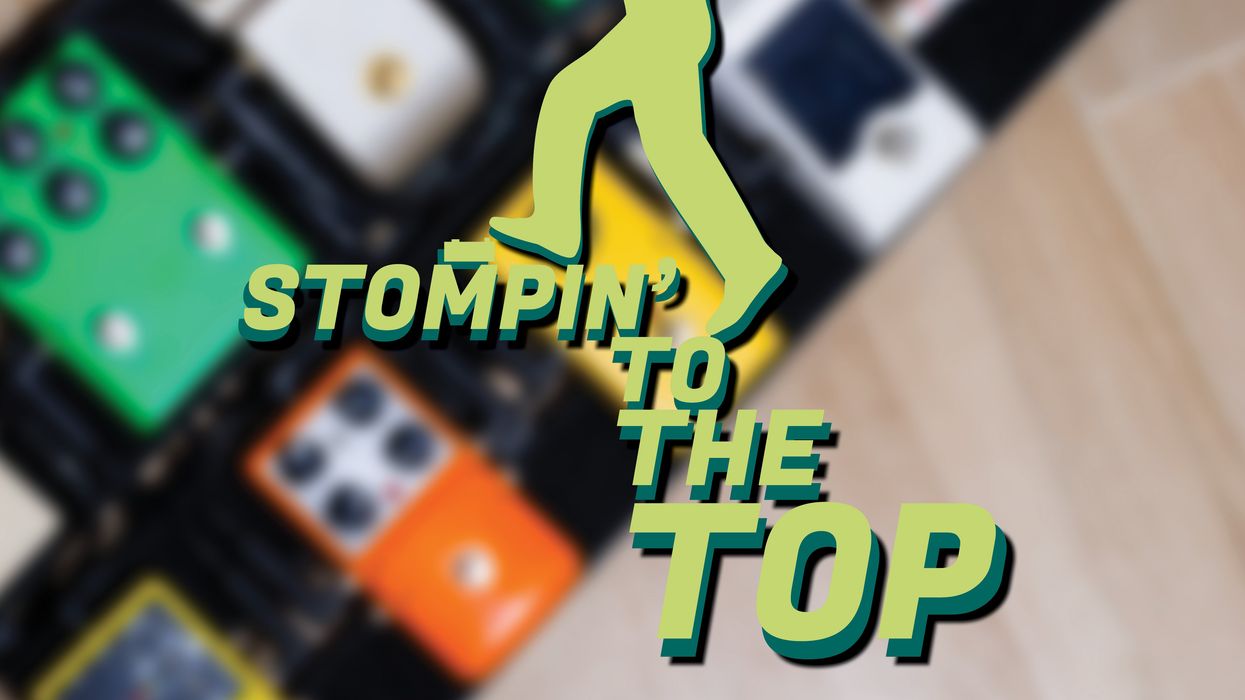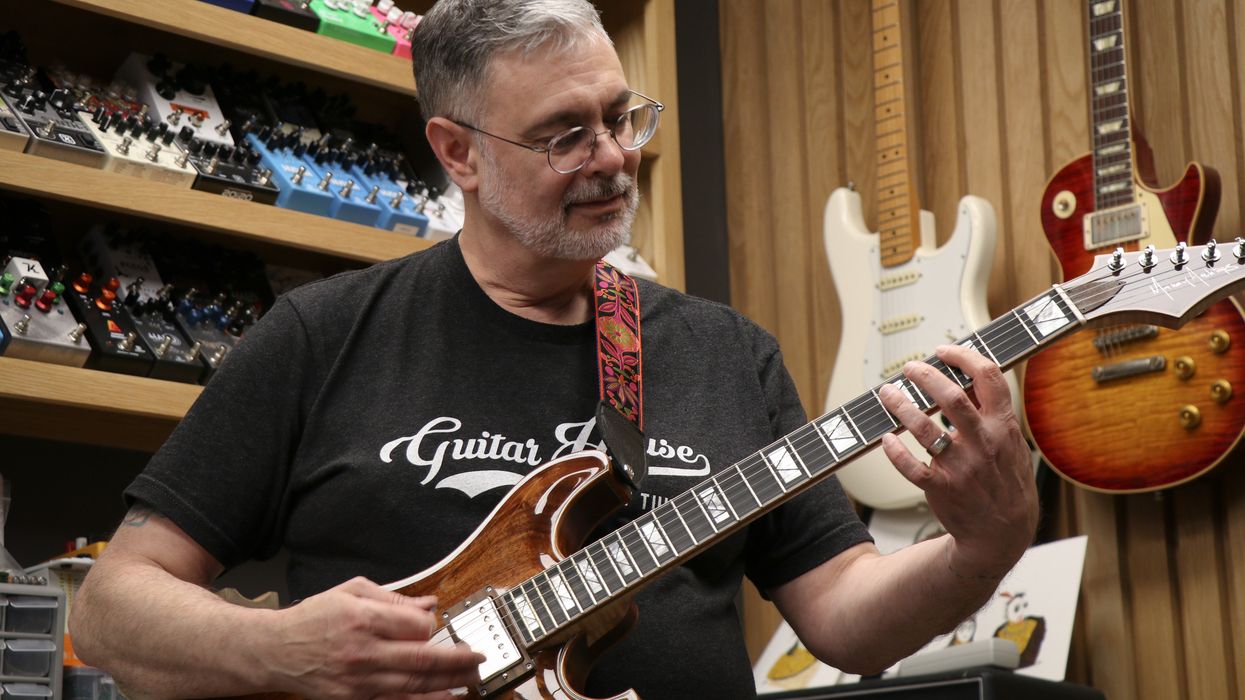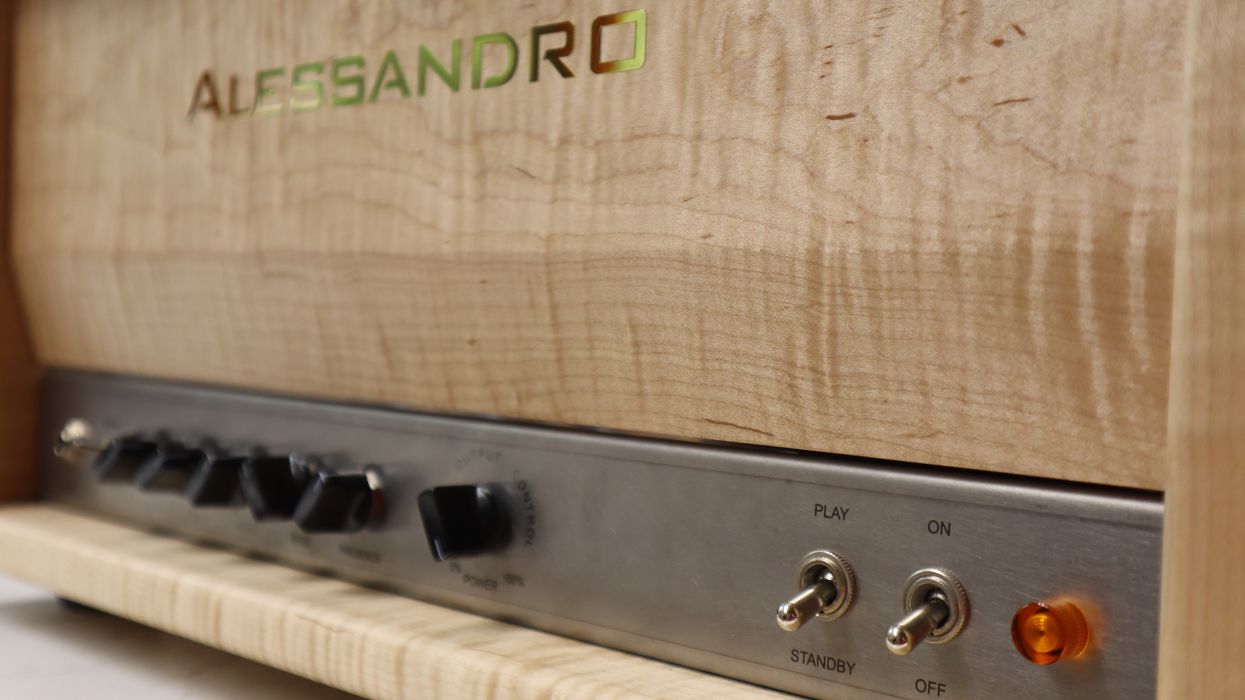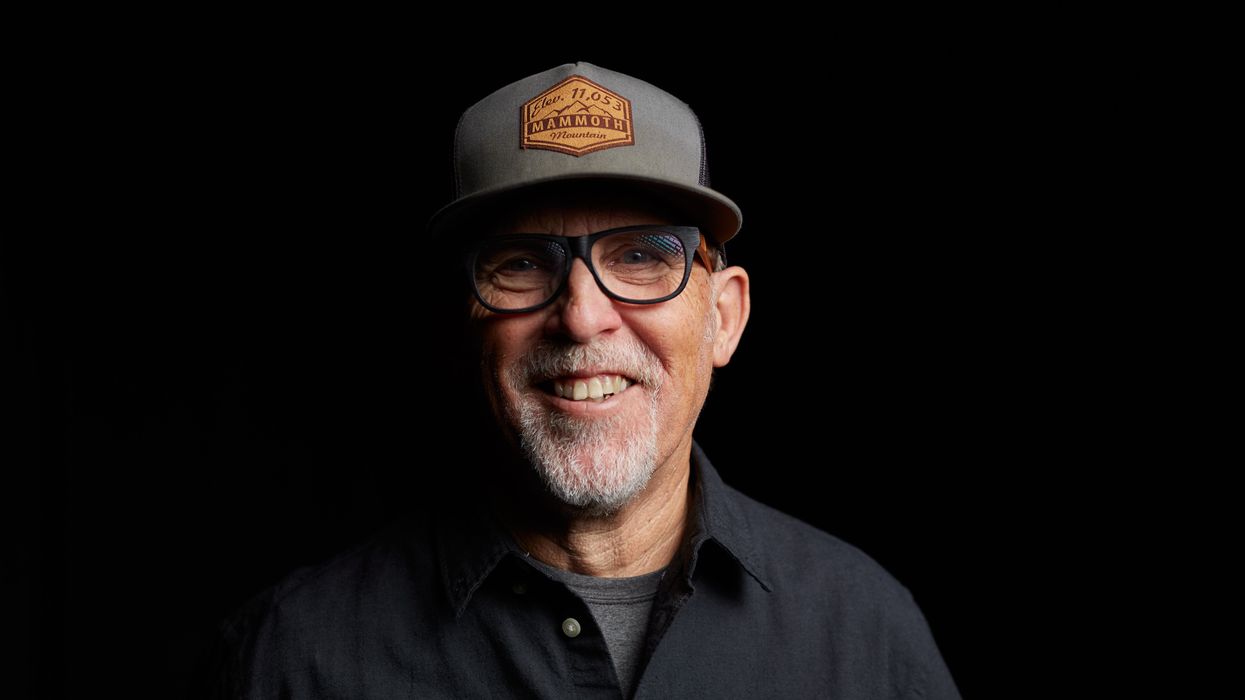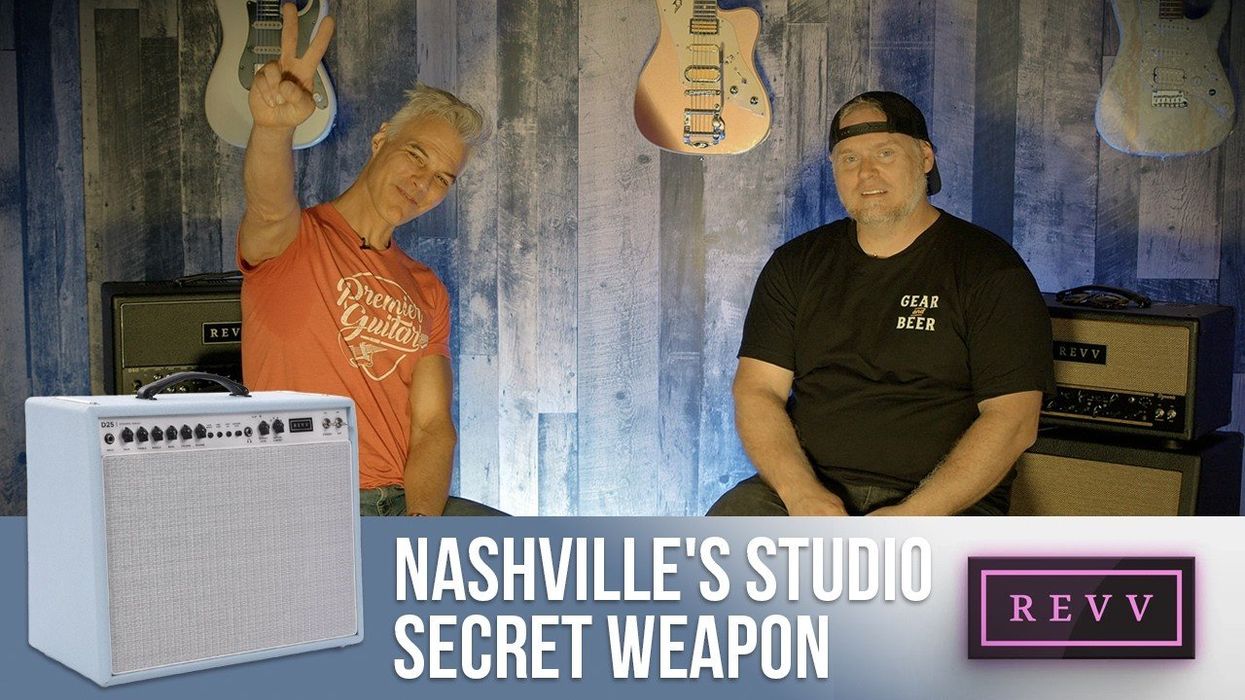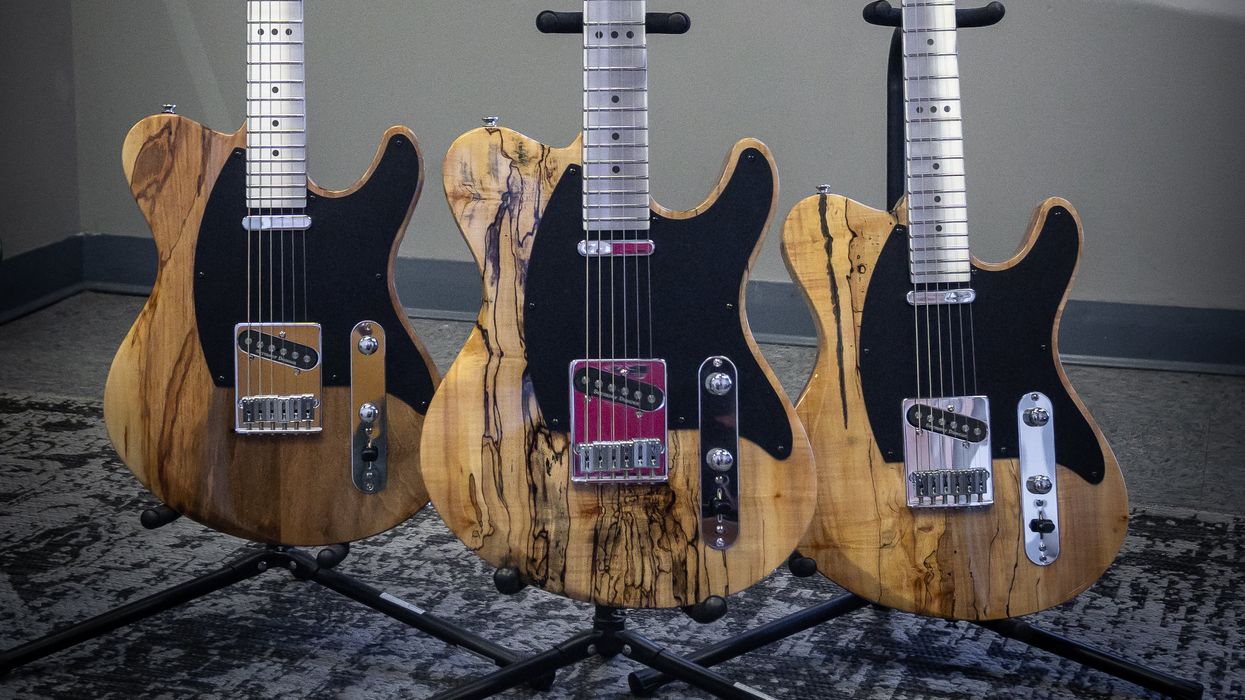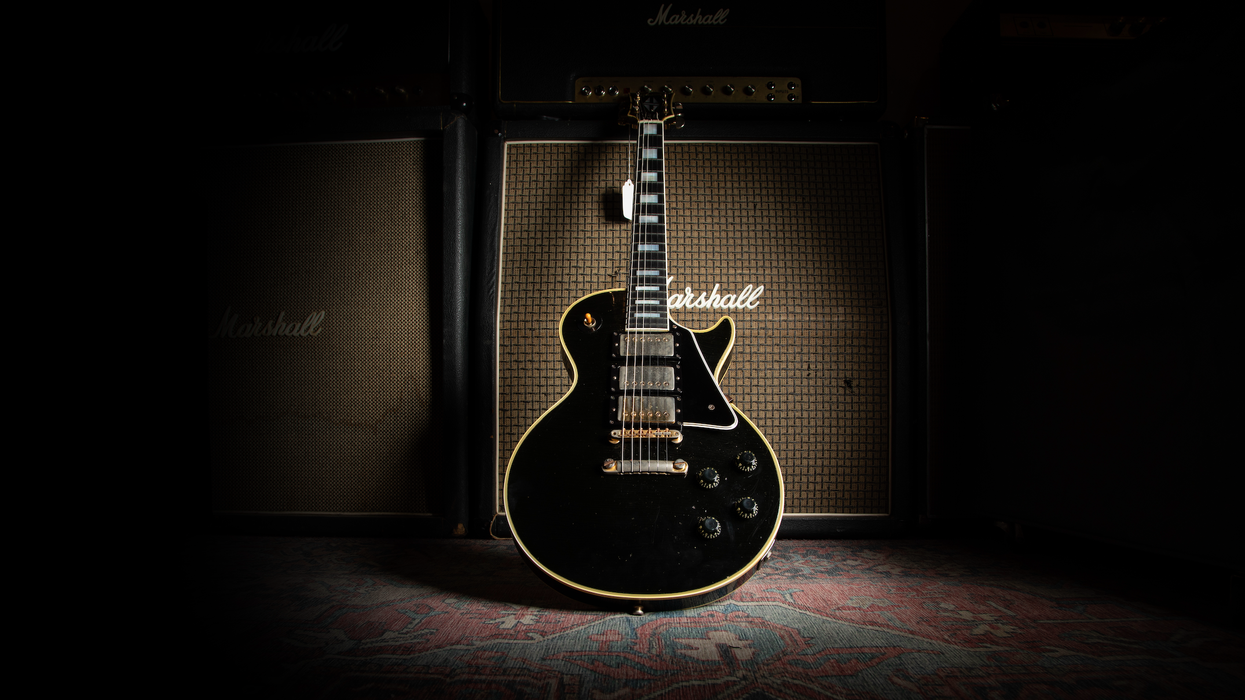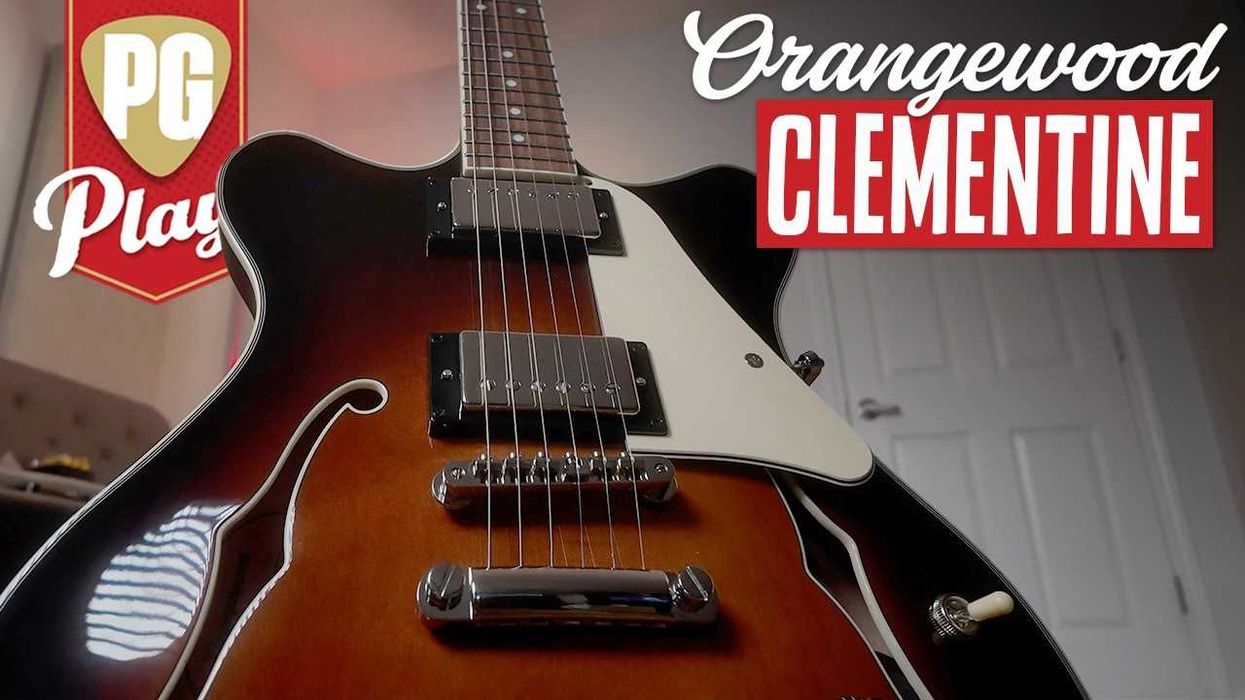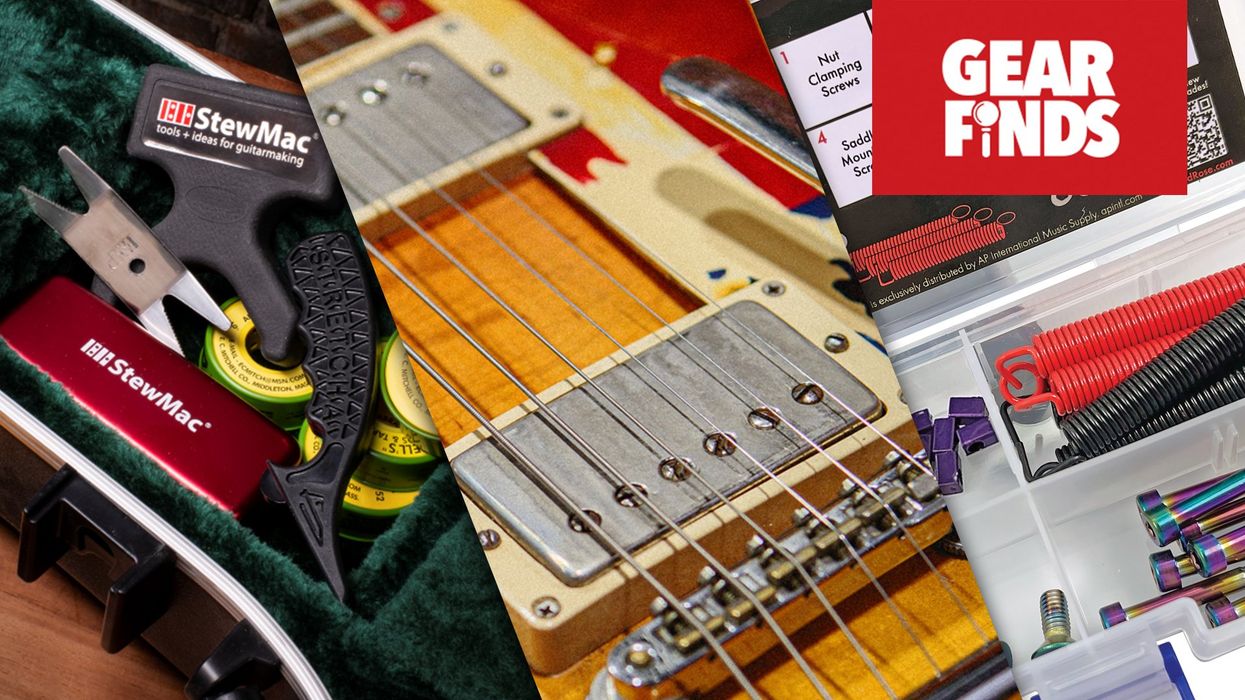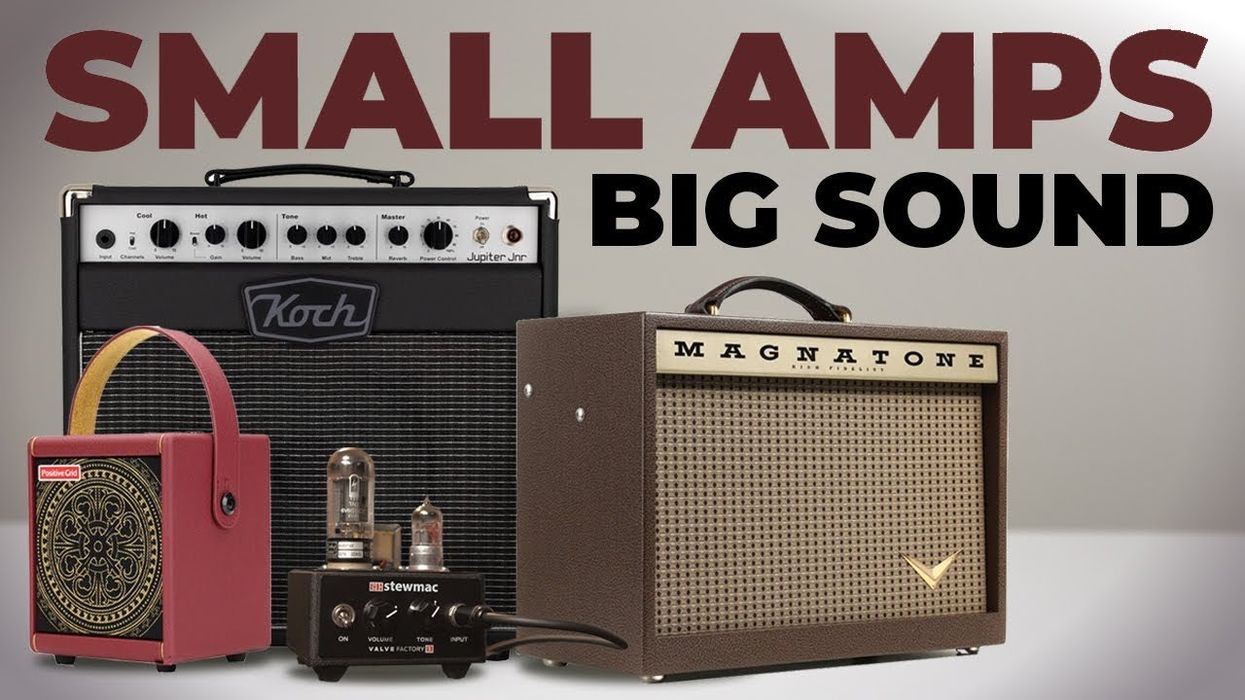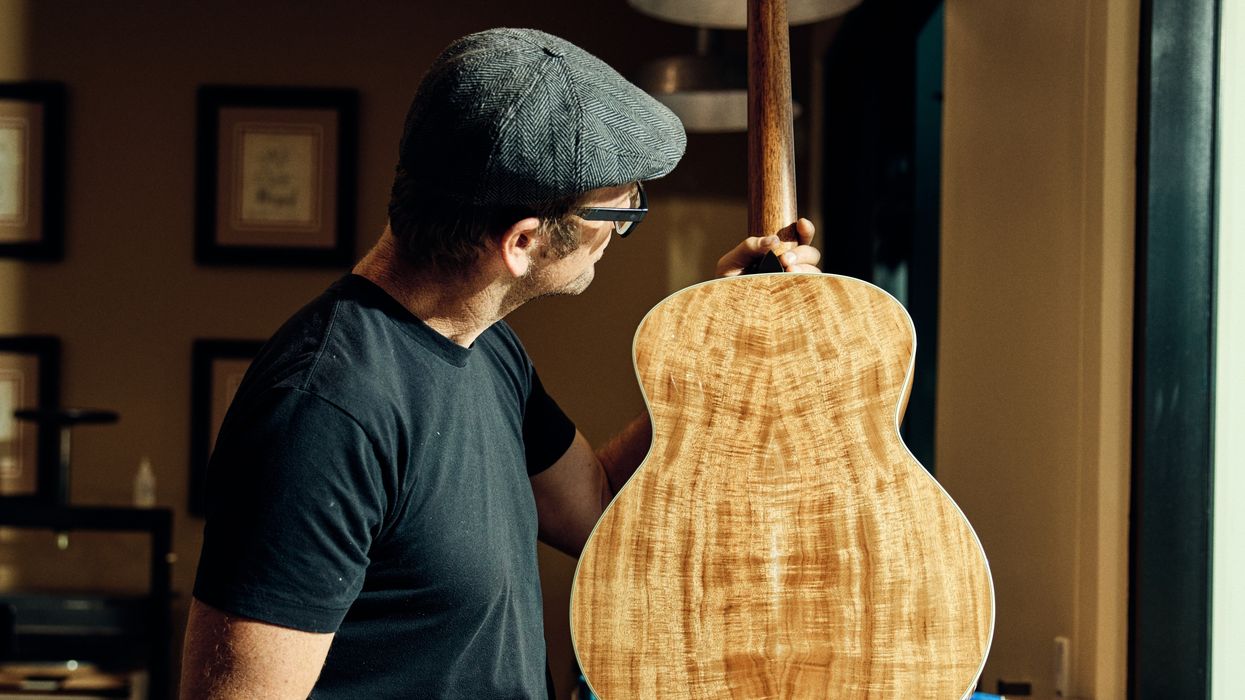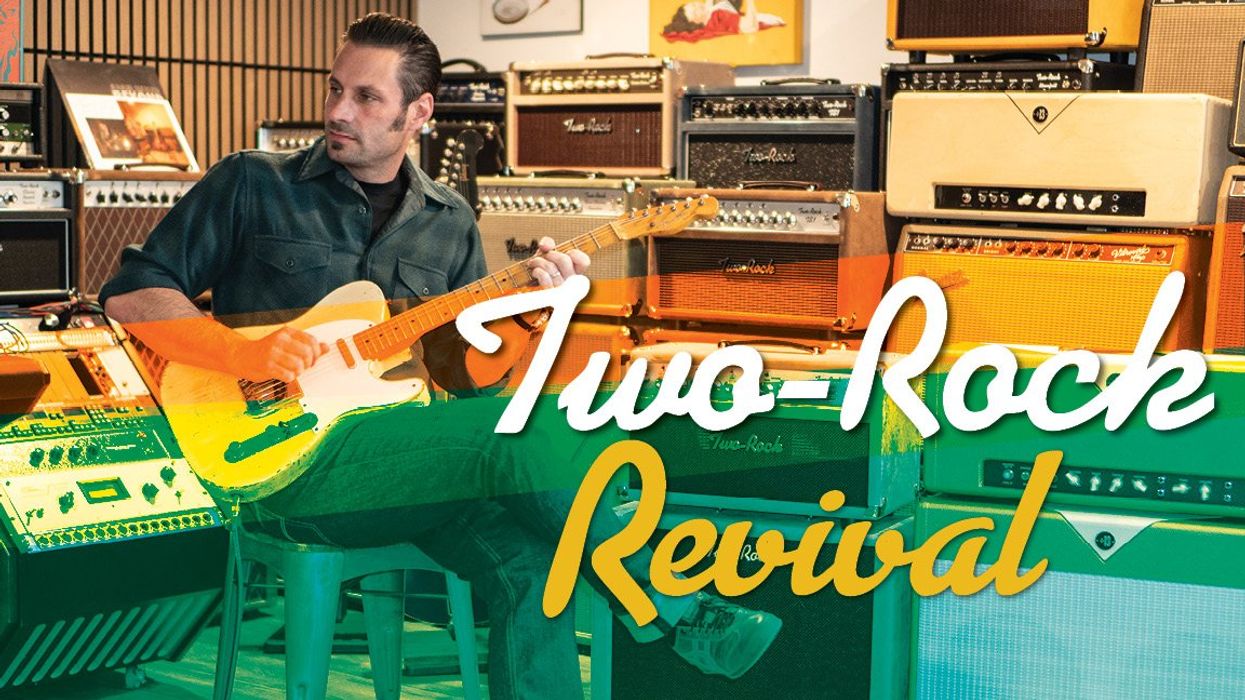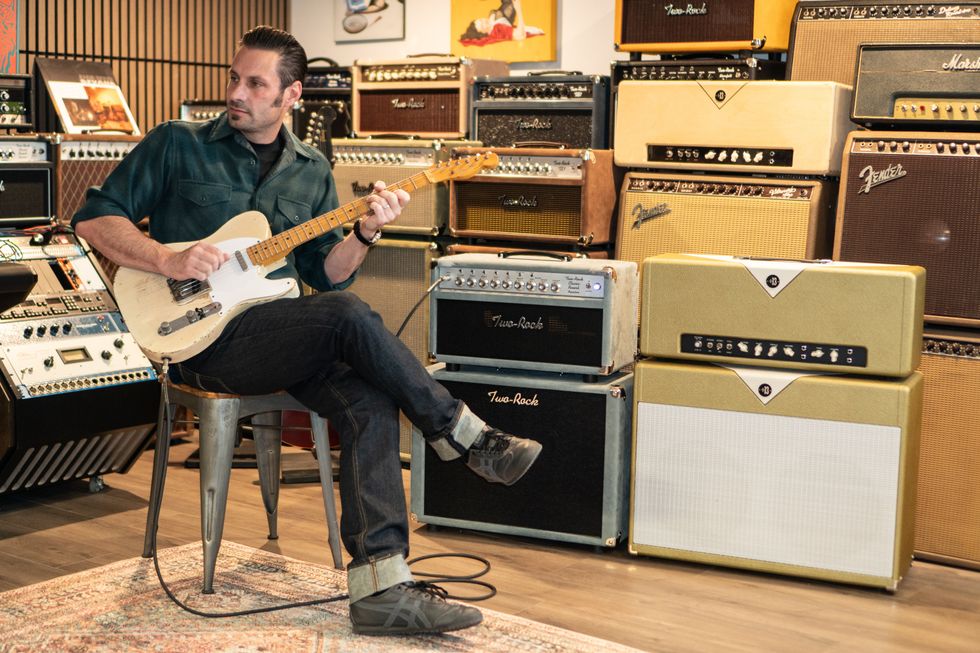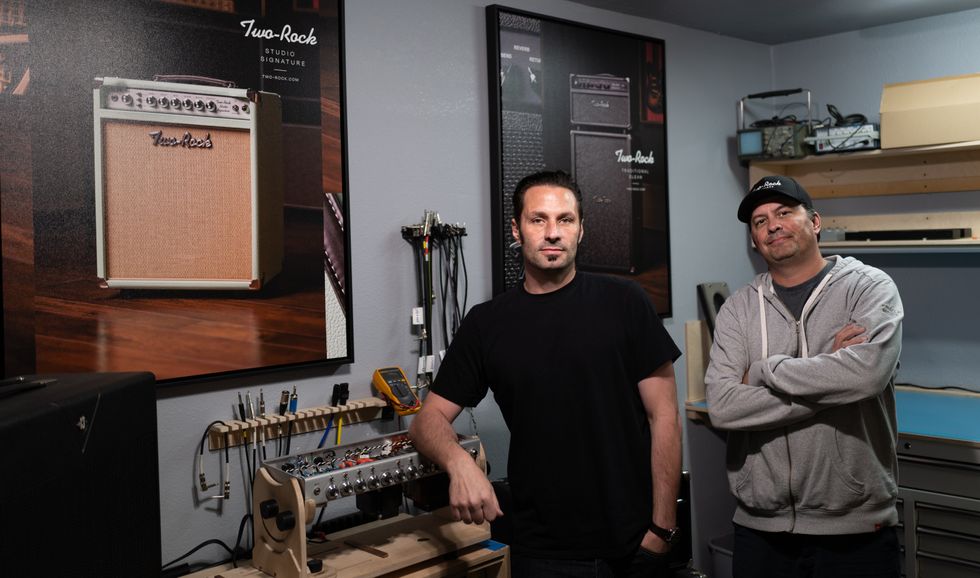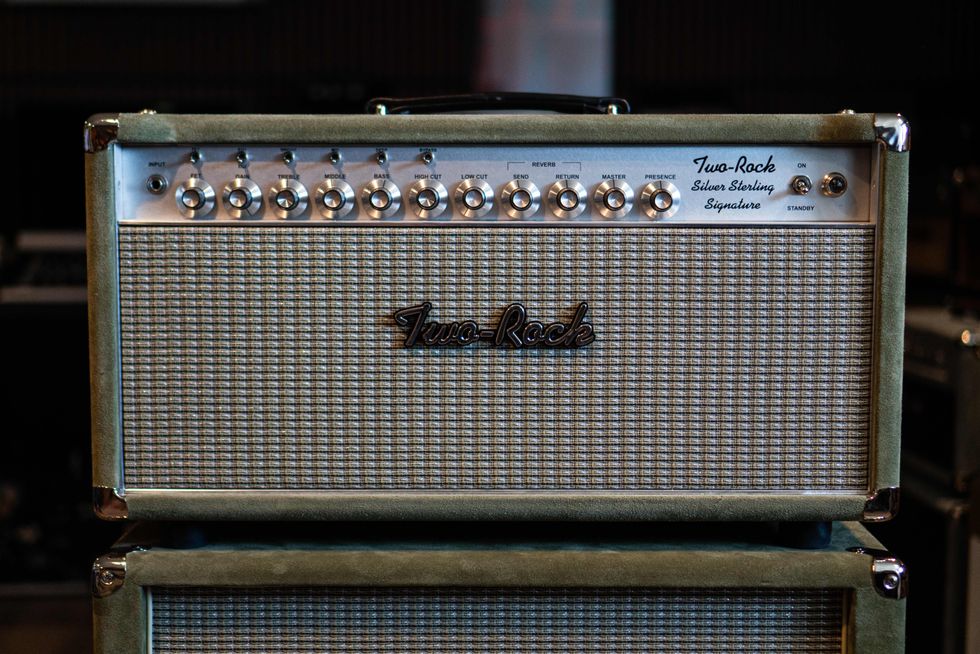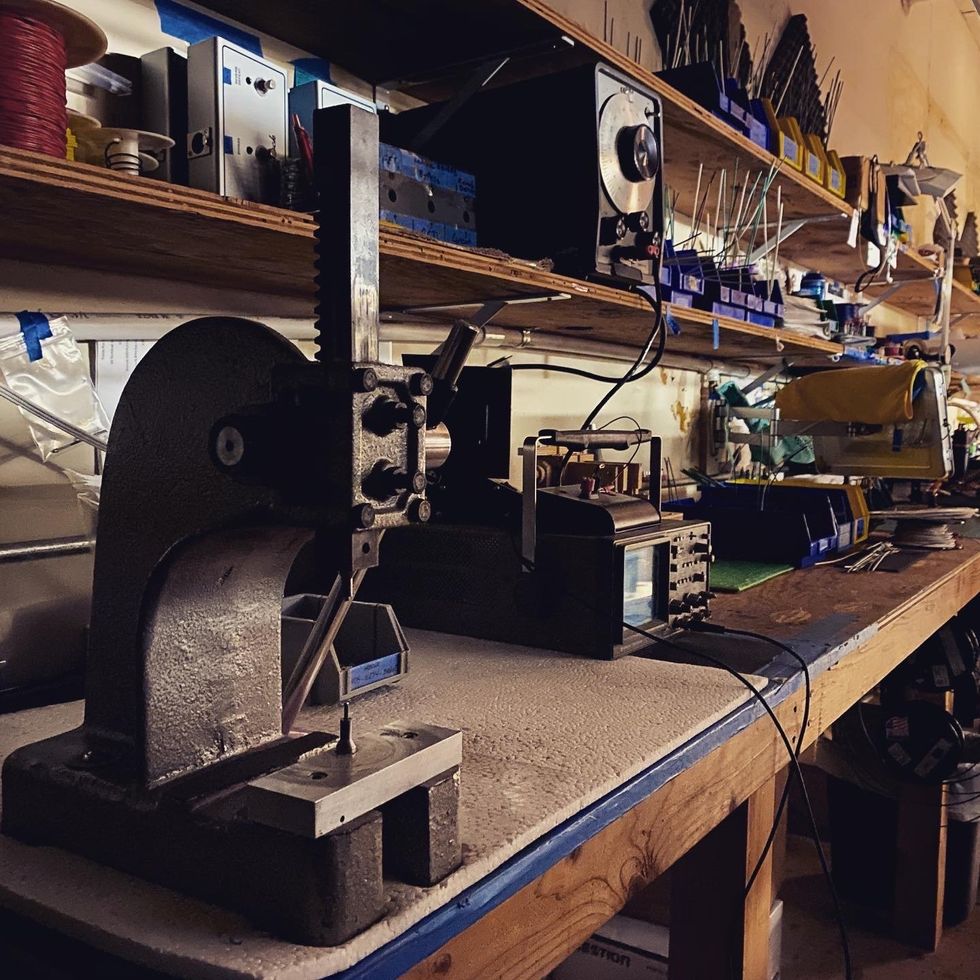“The unique characteristics of the StingRay were a happy accident,” proclaims Sterling Ball, bassist and retired CEO of Ernie Ball, current and longtime manufacturers of the now-iconic Music Man StingRay bass.
Happy accidents sometimes seem par for the course when it comes to discovery and innovation, and it’s true that the development and subsequent popularity of the model is partly due to such happenstance. But the StingRay, first introduced in 1976, also featured unique appointments that were carefully considered, including the onboard active EQ, the 3+1 headstock configuration, and the single Music Man humbucker. Such innovations quickly made the StingRay the go-to bass for a bevy of dynamic, influential players.
Popular music of the last few decades is full of incredibly diverse examples of how the StingRay helped shape and define the sound of recorded bass for the modern era. Look no further than Flea’s playing on the first six Red Hot Chili Peppers albums, Tim Commerford on Rage Against the Machine’s monumental debut, Louis Johnson’s groundbreaking slap-bass work with Brothers Johnson and on Michael Jackson’s Thriller, Joe Dart’s more recent fleet-fingered approach with Vulfpeck, and, of course, Cliff Williams’ steady pulse within AC/DC’s immense body of work. StingRay-wielding bassists deliver the grooves on a wide range of immediately identifiable hits, including Chuck Wright’s performance on Quiet Riot’s arena-ready anthem “Metal Health (Bang Your Head),” John Deacon’s pseudo-funk on Queen’s “Another One Bites the Dust,” Bernard Edwards’ disco dynamite on Chic’s “Le Freak,” Tony Levin on Peter Gabriel’s “Sledgehammer,” and the late Louis Johnson on Michael Jackson’s “Billie Jean.” And that’s just scratching the surface.
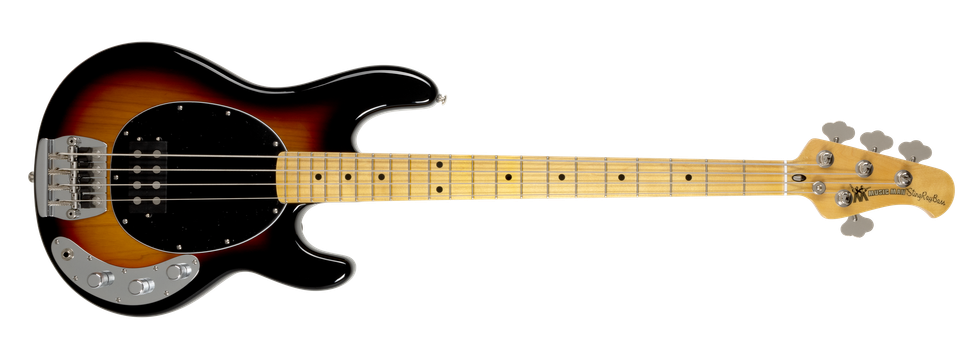
The StingRay bass is alive and well. The Retro ’70s variation seen here faithfully reproduces the specs of the original Music Man model.
That the StingRay can be found in such varied styles gives credence to its versatility, reliability, and craftsmanship. Upon its introduction, the StingRay was poised to forever alter the sonic landscape of the low end. “There wasn’t a whole bunch of innovation happening in the electric bass industry at the time,” says Ball, “and some of the newer rock bassists really wanted a brighter sound. It was the right bass at the right time.”
StingRay Prehistory
The seeds of the StingRay were sown a long, long time ago among a who’s who of electric guitar industry pioneers who knew and influenced each other well before the instrument was even a twinkle in their collective eyes. Ernie Ball and Leo Fender first met sometime in the mid to late ’40s. “Leo was still running his radio repair shop in Fullerton, California, playing around with little amps and the Broadcaster prototypes,” surmises Sterling Ball, who is Ernie’s son. “My dad was just taken by all of it. It was life-changing for him and actually set the path for the Ball family.” By 1946, Leo had turned radio repairs over to Dale Hyatt (future co-founder of G&L, but that’s another story) and renamed his own business Fender Electric Instruments Company, where he focused on building guitars and amps.
Ernie Ball, a steel guitarist, became an official Fender endorsee in 1953. A few years later, in 1958, he opened what he claimed to be the first guitar store in the U.S. in Tarzana, California. By 1962, Ball would pioneer the custom-gauge-guitar-string revolution, setting in motion the decades-long success of the Ernie Ball company.
When the Fender company was sold to CBS in 1965, Forrest White was vice president. He and Tom Walker, an esteemed sales representative, remained with Fender for a short time after the sale, but by 1971, they had formed Tri-Sonix, Inc., with Leo Fender as a financial backer and silent partner. The company’s name was officially changed to Music Man in 1974, and Leo Fender was appointed president the following year, coinciding with the expiration of a 10-year non-compete clause lingering from the CBS sale.
The Early Days
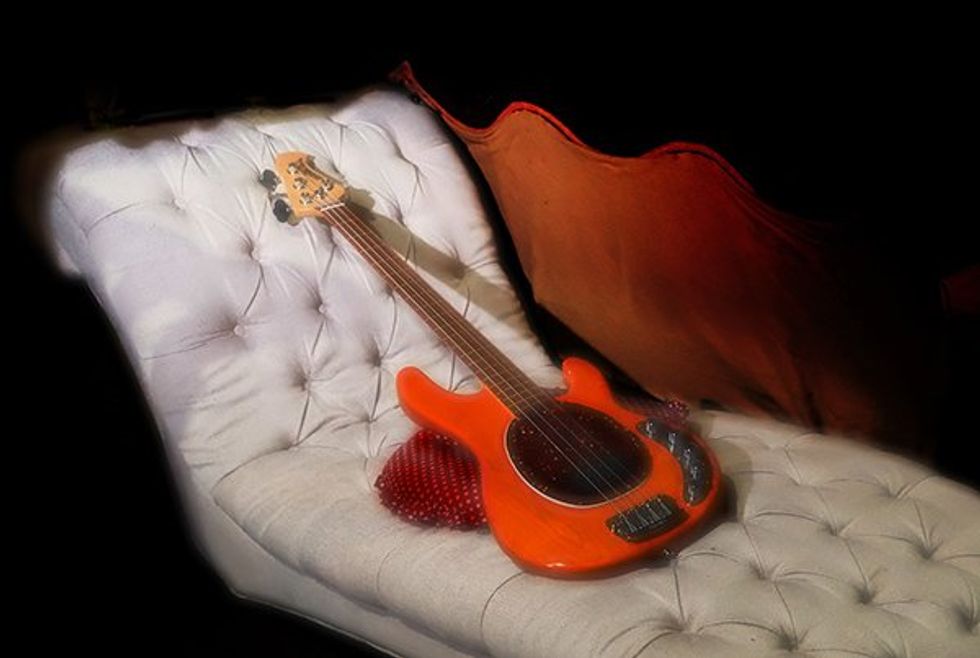
One of Tony Levin’s many StingRay basses takes a rest from his busy schedule of touring and sessions.
Photo by Tony Levin
The StingRay bass debuted in 1976. Designed by Leo Fender, Tom Walker, and Forrest White, with beta-testing input from Sterling Ball, the StingRay was the first production bass to offer onboard active equalization. And because the relationships between all parties involved went far beyond business, it’s worth noting that they decided to honor their personal connection by embedding it into the aesthetics of the instrument via the Music Man company logo. “When you look at the headstock of the Music Man and you see the two little guys there, that’s my brother Sherwood and me,” reveals Ball, who is Walker’s godson. “Some people think that’s not true. It’s true. Unfortunately, no one around but me really knows.”
Sterling Ball was a burgeoning bass player by the mid ’70s; he’s played with Albert Lee and Steve Lukather among others. In addition to his beta-testing input, Ball explains that his personal/professional vantage point also put him in the position of mediator, when needed, between Walker and Fender. “Tommy and Leo would argue,” he recalls. “When I first went there, the bass was unplayable because the preamp was so hot it would overdrive the input impedance of just about any amp.” Walker, who was also an electrical engineer, “self-taught like most of the great ones,” according to Ball, designed the preamp. Walker had previously designed the Blender Fuzz pedal for Fender and would ultimately be responsible for developing Music Man amps.
The StingRay’s distinct sound also had a lot to do with Fender’s personal predilections and physical ailments. “People think Leo was a sonic shaper and that his intention was to change how the world hears sound, but Leo was deaf,” [Editor’s note: not literally.] laughs Ball. “Leo had no idea about funk, and he had no idea about slapping. He fancied country music, where the guitar is brighter. If you grow up eating hot peppers, your tolerance for heat is normal. So, if you grow up with a Stratocaster, that shapes what you think an electric guitar should sound like.” The fact that the bright, snappy-sounding StingRay would appeal to slap bassists like Louis Johnson was essentially pure luck, according to Ball, because Fender was getting Walker to crank the active circuit to his own taste, as well as compensate for the diminished frequencies in his own hearing.
“When you look at the headstock of the Music Man and you see the two little guys there, that’s my brother Sherwood and me.” —Sterling Ball
Tony Levin has played StingRay basses throughout his career with Peter Gabriel, King Crimson, and others, and he got his hands on one in the early days through the late Joel DiBartolo, 18-year veteran of The Tonight Show Starring Johnny Carson and another beta-tester for the burgeoning Music Man company. “My memory of that bass is recording a Peter Gabriel album, probably in ’79,” recalls Levin. “The high-end was so sensitive it was picking up crackles from static electricity. I was in the control room with a wire wrapped around my ankle, attached to the studio desk for grounding, to keep the crackle down.” That crackle didn’t deter Levin from realizing the StingRay’s sonic potential, though. In 1980, he played the same bass on John Lennon and Yoko Ono’s iconic Double Fantasy album.

Flea and his StringRay catch some air at Lollapalooza on Montage Mountain in Scranton, Pennsylvania, on August 15, 1992.
Photo by Ebet Roberts
The development and inclusion of Tom Walker’s active onboard preamp/EQ circuit was by-and-large the biggest innovation for a production-model bass guitar at the time. In this case, Ball likens Fender to a hot-rod enthusiast. “He liked having all that power,” he says. “He got a wider frequency response, and he could hear the bass better.” Levin says the original Music Man StingRay bass “felt like a Fender but had lows that engineers were craving, and that I just couldn’t get with my Precision.”
The preamp/pickup/bridge combination was the main source of the StingRay’s bright tone. According to Ball, Fender was not particularly concerned about tonewood when designing instruments. “His beta-testing was all done on finished-plywood board, which has no resonance,” reveals Ball. “It had a hole routed out where he could move different pickups in, and it had breadboarded circuitry on the outside.” It also had the high-mass, string-through-body Music Man bridge, another signature component. “When you went into Leo’s lab, he’d make you put a screwdriver on the bridge and then press the other side on the cartilage of your ear to listen to it vibrate,” recalls Ball. “If you do that, you feel the whole body vibrate. The guitar’s alive. One of the great things about the StingRay bridge is it really gives the instrument that ability to ring and vibrate. It’s so cool.”
Also contributing to that kind of lively sustain is the 3+1 tuning key headstock configuration, which was Forrest White’s contribution to the instrument’s design. Because this arrangement eliminates angled string pull on the headstock, it also prevents dead spots. At least that’s the theory. “Nothing’s bending to make it to the tuning peg,” explains Ball. “It's a straight string pull.” The 3+1 setup also made it identifiable for marketing. But there was one aspect of that design on the original Music Man models that clearly irked Ball. “They put the string tree on the G and the D. It didn’t need to be there. Most instruments we make don’t need a string retainer, but we’re trying to stay true to the original design.”

The latest iteration of the StingRay is the new DarkRay, a thoroughly modern take on the StingRay formula that was created in collaboration with Darkglass Electronics. It features a 2-band EQ preamp from Darkglass with clean, distortion, and fuzz modes, plus a neodymium humbucker, roasted maple neck, and more.
The Ernie Ball Music Man StingRay Emerges
In 1984, the Ernie Ball company bought Music Man at auction. “I didn’t have a guitar factory. I thought, ‘What the hell am I going to do?’” Sterling Ball chuckles. “So, I had to build a factory.” Ball brought in Dan Norton, his dad’s right-hand-man, and Dudley Gimpel, a renowned builder who worked at Knut Koupée Music Store in Minneapolis. “It was Dudley, Dan, and me. And now we have to make a bass [laughs].”
It was important to Ball that their builds were consistent, and since the original Music Man StingRay basses have notoriously inconsistent weights, Ball and his fledgling crew sought to rectify that issue. “Some were so heavy, I don’t think if you had a live-in chiropractor you could play them, and then there were others that were feather light. I gravitated towards the lighter ones.” Ball charted his course by trying to discern the difference between making a good bass versus making a great bass. “You could take one log and make 20 basses, and two of them are just going to be infinitely better.”
“[Leo Fender] liked having all that power. He got a wider frequency response, and he could hear the bass better.” —Sterling Ball
Other changes in the Ernie Ball era included moving the string tree to the D and the A strings, automating pickup production, adding contours, and changing the finish. Perhaps the most significant development, however, was adding the 3-band EQ and eventually offering an 18-volt circuit option. “What was fantastic when Ernie Ball took over was the addition of a midrange control,” states Levin. “I could make it sound like the Precision some engineers still wanted, but, for my preference, I could roll the midrange back.”

Bernard Edwards and his StingRay behind the board at the Power Station in New York City on April 6,1983.
Photo by Ebet Roberts
Ball concurs: “When we came out with the 3-band, which was cut and boost, you really got a lot more flexibility and a lot more options.” They eventually learned to voice the 3-band EQ based on customers’ tendencies to crank all the knobs. “In our business, everybody’s idea is everything has to be fully on,” explains Ball. “We could give you a lot more, but we know that if somebody turns everything up and plugs it in, they’re going to think it sounds terrible. So, we actually have to put it where we want it when it’s pegged. I’m not saying that we were putting a limiter on it, but we do voice it for being dimed.”
The StingRay remains a preeminent electric bass for many hotshot players, and the model’s line ranges from the vintage-informed Retro ’70s model to the heavy-music-tinged DarkRay to a host of signature models. But one thing that Ball says has been a little frustrating and limiting is the fact that most companies are still primarily selling 60-year-old designs.
“The path to innovation is very tough because of what players are willing to accept—it’s a narrow cast,” he says. “When you come out with a guitar or bass that looks different, it’s so interesting to see how strongly people oppose it at first. But if you don’t like it, you don’t have to get mad. It’s just not for you. We’re not taking your birthday away; we’re not taking Valentine’s Day away. All we’re doing is adding choices. You have to remind them that we didn’t take anything away. We just gave somebody else another choice.”
